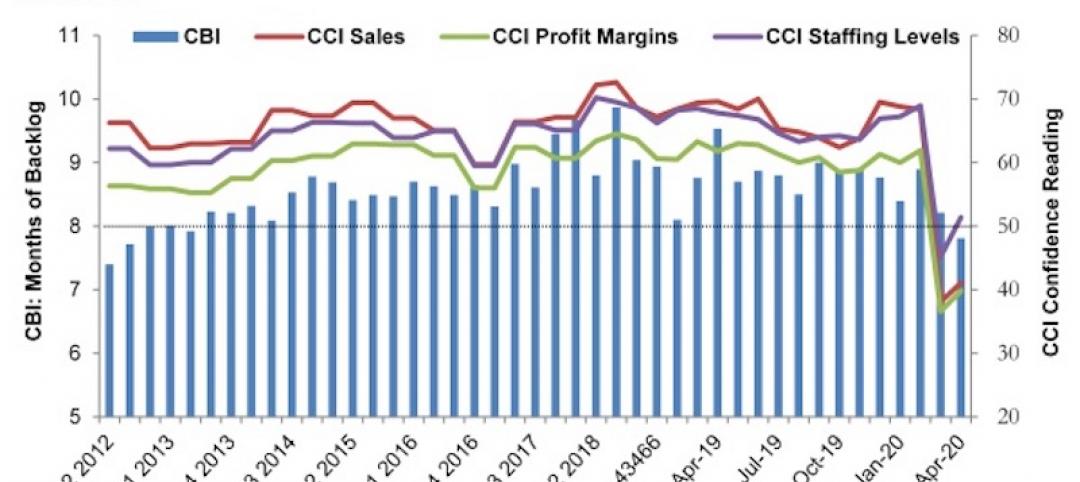I’ve been going to trade shows for more than 35 years, and it never ceases to amaze me how many suppliers I’ve never heard of. While there are always well-known brands on display, like Kohler and
Whirlpool, marketing strategies for most suppliers typically view the general public as an afterthought.
The relevance of brand recognition has always been debatable in the B2B universe. With notable exceptions like BASF, few manufacturers or industry groups see value in generating top-of-mind awareness for their products and services with consumers. It’s far more advantageous, their thinking goes, to aim at municipalities, developers, and their AEC partners.
“It’s not in their organizational DNA” to market to the public, observes Kimberly Jones, President of Butler/Till, a media planning firm.
But the public isn’t a passive bystander anymore. It is an avid stakeholder insisting that its input be factored into the design and construction of all kinds of projects: schools, offices, hospitals, multifamily housing, even sports arenas. Marketing that relegates the public to the sidelines misses an opportunity to influence—even tangentially—these influencers.
I was thinking about branding while standing on the periphery of the International WELL Building Institute’s booth at last month’s Greenbuild convention in Los Angeles, watching one of a steady stream of interviews with company execs and partners, presented to Greenbuild attendees. IWBI, which launched in 2013, is striving to create a brand. But for whom, I wondered?
Its WELL Building Standard stems from a larger wellness movement being spurred by a public that is demanding healthier home and work environments. But certification programs that measure and grade buildings and products have been mostly indifferent about propagating their brands.
The EPA’s Energy Star program, which has been around for 24 years, gained purchase as energy rates rose. But EPA’s WaterSense labeling program, which celebrates its 10th anniversary this year, has yet to muster that level of brand awareness, in part, because water is relatively inexpensive in most markets.
The WaterSense label is on 16,000+ product models. Through 2015, it has helped consumers reduce energy and water costs by $32.6 billion. Yet, fewer than one-quarter of Americans are aware of the brand, according to a GfK survey.
My guess is that the same is true, to a greater or lesser degree, of LEED, Green Globes, Cradle to Cradle, and other regimens that hold buildings and products accountable for their efficiency, sustainability, or healthiness. Imagine the marketing boost for manufacturers and builders if these certification programs more broadly impacted consumers’ decisions about what to buy or where to live and work?
The Cradle to Cradle label is on nearly 6,000 products under 400-plus corporate certificates. Those products include many consumer brands, from Shaw Industries (flooring) to Method (soap). The Cradle to Cradle organization is confident that the brand means something to “knowledgeable consumers” (read: Millennials), says Stacy Glass, the group’s VP of Built Environment.
But any consumer branding campaign would be futile without critical mass. “What I’d like to see is our label on one million products under 10,000 certificates across the built environment,” says Glass.
Related Stories
Market Data | May 12, 2020
ABC’s Construction Backlog Indicator falls in April; Contractor Confidence rebounds from historic lows
Nonresidential construction backlog is down 0.4 months compared to the March 2020 ABC survey and 1.7 months from April 2019.
Market Data | May 12, 2020
6 must reads for the AEC industry today: May 12, 2020
A 13-point plan to reduce coronavirus deaths in nursing homes and Bjarke Ingels discusses building on Mars.
Market Data | May 11, 2020
Interest in eSports is booming amid COVID-19
The industry has proved largely immune to the COVID-19 pandemic due to its prompt transition into online formats and sudden spike in interest from traditional sports organizations.
Market Data | May 11, 2020
6 must reads for the AEC industry today: May 11, 2020
Nashville residential tower will rise 416 feet and the construction industry loses 975,000 jobs.
Market Data | May 8, 2020
Construction industry loses 975,000 jobs in April as new association survey shows deteriorating demand for construction projects
Association partner Procore also releases near real-time construction data measuring impacts of coronavirus as association calls for new measures.
Market Data | May 8, 2020
7 must reads for the AEC industry today: May 8, 2020
The death of the office and Colorado's first multifamily project to receive WELL Precertification.
Market Data | May 7, 2020
5 must reads for the AEC industry today: May 7, 2020
5 memory care communities with a strong sense of mission and making jobsites safer in the COVID-19 world.
Market Data | May 6, 2020
6 must reads for the AEC industry today: May 6, 2020
5 questions engineers will ask after COVID-19 and coronavirus threatens push for denser housing.
Market Data | May 5, 2020
5 must reads for the AEC industry today: May 5, 2020
A new temporary hospital pops up in N.J., and apartment firms' reactivation plans begin to take shape.
Market Data | May 4, 2020
6 must reads for the AEC industry today: May 4, 2020
How working from home is influencing design and is this the end of the open office?
















